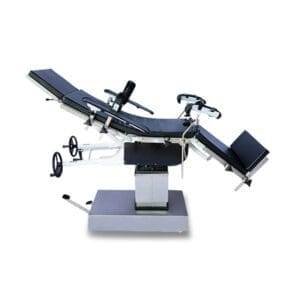Address
304 North Cardinal St.
Dorchester Center, MA 02124
Work Hours
Monday to Friday: 7AM - 7PM
Weekend: 10AM - 5PM
Surgical procedures demand the highest standards of cleanliness and precision. Within the surgical suite, an operating table (OT table) is the centerpiece that provides a stable platform for patients. Manual OT tables, known for their reliability and cost-effectiveness, are widely used in medical facilities. However, ensuring the safety and hygiene of these tables is paramount. In this extensive guide, we will delve into the essential steps and best practices for properly maintaining and cleaning a manual OT table to uphold the highest standards of patient care and safety.
 Manual OT tables are an integral part of any surgical setup. Proper maintenance and regular cleaning are imperative to ensure the longevity of the table, prevent infections, and provide a safe environment for patients. Let’s explore the comprehensive steps for maintaining and cleaning a manual OT table.
Manual OT tables are an integral part of any surgical setup. Proper maintenance and regular cleaning are imperative to ensure the longevity of the table, prevent infections, and provide a safe environment for patients. Let’s explore the comprehensive steps for maintaining and cleaning a manual OT table.
Begin the maintenance process with a thorough visual inspection of the manual OT table. Look for any visible damage, loose components, or signs of wear and tear. Pay special attention to:
Inspect the caster wheels to ensure they are free from debris and move smoothly. Replace any damaged or worn-out wheels promptly to maintain the table’s mobility.
Check that all locking mechanisms, including those for height adjustment and tabletop tilt, are functioning correctly. Ensure that they lock securely to prevent unexpected movements during surgery.
Examine the tabletop surface for any cracks, stains, or scratches. A clean and well-maintained tabletop is crucial for infection control and patient comfort.
Lubricate all movable parts, such as hinges and joints, with the recommended lubricants. Proper lubrication reduces friction and prolongs the life of these components.
Tighten any loose screws or bolts identified during the visual inspection. Loose components can compromise the stability and safety of the table.
Select appropriate cleaning agents recommended by the table’s manufacturer or in accordance with your facility’s infection control protocols. Typically, a mild, non-abrasive disinfectant is suitable.
Thoroughly clean and disinfect all surfaces of the manual OT table, including the tabletop, frame, and controls. Pay extra attention to high-touch areas. Follow the manufacturer’s guidelines for disinfection products and contact times.
Clean and disinfect any upholstery or padding on the table. Ensure it is free from stains, tears, or signs of wear. Replace or repair damaged padding as needed.
If the manual OT table contains electrical components, such as control panels or motors for Trendelenburg and reverse Trendelenburg positions, inspect these components for any signs of damage or malfunction.
For electrical safety, schedule periodic inspections by a qualified technician to ensure that electrical components are in good working order. Follow your facility’s electrical safety protocols.
 Functionality Testing
Functionality TestingAfter maintenance and cleaning, perform functionality tests on the manual OT table. Verify that all adjustments, including height, tilt, and lateral tilt, work correctly and smoothly.
Ensure that all locking mechanisms securely hold the table in place during adjustments. Confirm that they release and engage without issues.
If the table has electrical components, test the functionality of these components, including control panels and safety features, to ensure they operate as intended.
A1: Manual OT tables should undergo routine maintenance and cleaning as part of a regular schedule. The frequency may vary depending on the intensity of use and the manufacturer’s recommendations, but it is typically performed at least quarterly.
A2: It is not advisable to use common household cleaning agents, as they may not meet the infection control standards required for medical equipment. It is recommended to use cleaning agents specified by the table’s manufacturer or those compliant with your facility’s infection control protocols.
A3: When inspecting electrical components of a manual OT table, ensure that the table is disconnected from the power source to prevent electrical hazards. Electrical inspections should be conducted by qualified technicians following safety protocols.
Proper maintenance and cleaning of a manual OT table are essential to ensure patient safety, infection control, and the longevity of the equipment. By conducting pre-maintenance checks, lubricating and tightening components, following rigorous cleaning procedures, inspecting electrical components (if applicable), and performing post-maintenance tests, medical facilities can maintain a high standard of hygiene and safety in their surgical environments. Manual OT tables, when properly cared for, continue to be a reliable and indispensable tool in the realm of surgical medicine.
